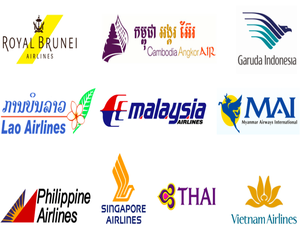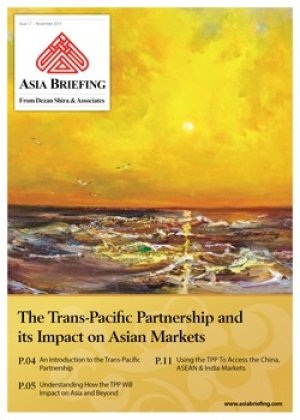The State of ASEAN Aviation in 2016
 By: Alexander Chipman Koty
By: Alexander Chipman Koty
As ASEAN pursues greater regional integration and the development of a single economic bloc, advancements in the region’s aviation industry are essential to boost economic connectivity and tourism. In addition to promoting free movement of labor, liberalization will open the industry to unfettered competition between airlines and allow for regional expansion of national carriers. Half the world’s population live within five hours of ASEAN, making South East Asia a natural transportation hub not just for visiting the region’s sunny beaches, but also for accessing the bloc’s growing economic opportunities as well as those in neighboring India and China.
Disparities in member states’ levels of development, however, introduce obstacles of protectionist policies and poor infrastructure which stall the liberalization of the industry. While the long term prospects for ASEAN’s aviation industry are bright, there are significant barriers for investors to overcome to increase their presence in the region.
ASEAN Open Skies
ASEAN’s long-awaited Open Skies policy, also known as the ASEAN Single Aviation Market (ASEAN-SAM), finally came into effect on January 1, 2015. The implementation of this policy has met several hurdles, including significant reluctance from Indonesia and the Philippines, and is unlikely to be fully carried out until after 2016. Despite these impediments, the Open Skies policy should gradually increase policy convergence and liberalization among ASEAN member states and boost the region’s connectivity.
The Open Skies policy removes restrictions on third, fourth, and fifth airspace freedoms for airlines based in ASEAN member states. The lifting of these restrictions allow ASEAN-based airlines to freely transport people and cargo to or from a foreign country and to pick up and drop off people and cargo from a second country en route to a third. Under this policy, each member state will fully open up their international airports to other ASEAN members and eliminate restrictions on the frequency and maximum capacity of flights.
Removal of these regulations should encourage competition between airlines, drive down ticket prices, and open the door for principally domestic airlines to become regional players. With ASEAN’s potent tourism sector and a middle class predicted to double to 500 million by 2020, there is increasing demand for flights and tremendous potential for rapid growth in the industry.
 RELATED: Pre Investment and Market Entry Advisory from Dezan Shira & Associates
RELATED: Pre Investment and Market Entry Advisory from Dezan Shira & Associates
Industry Challenges and Limitations
Although the Open Skies policy lifts several restrictions, the adoption of a single aviation market requires policies that go farther. The liberalization process has met various roadblocks and resistance, limiting the effectiveness of these efforts. Open Skies grants the third to fifth freedoms of the air, but keeps the essential seventh restriction in place. Removing restrictions on the seventh freedom would allow airlines to transport passengers and cargo between two foreign countries, which is crucial to allow for the development of truly regional carriers. While the removal of regulations on the third to fifth freedoms is a step in this direction, in practice third and fourth freedoms were generally already granted and many airlines were already able to bypass fifth freedom restrictions through cross border joint ventures and various loopholes.
Several ASEAN members, particularly the less developed ones, are reluctant to open their doors to further liberalization out of fear their domestic airlines will not be able to compete on an open market. Many also have significant government-owned airlines, further complicating matters. For instance, Laos fears its airlines – the largest of which is government-owned – would be run out of business by competitors from far bigger markets such as Indonesia. Protectionist measures are common in the region, including subsidies for government-owned carriers and foreign ownership restrictions.
While in the European Union aviation integration policies have automatic force of law, in ASEAN they must be voluntarily agreed to by each member state. As such, the path to liberalization is a more gradual one. In response, some private market actors such as Tony Fernandes of AirAsia are advocating for the ASEAN-X approach, where less developed members can opt out of the implementation of reforms if they deem themselves not ready. This method would accelerate the pace of reforms by allowing a sub-group of states to liberalize ahead of others, though it would not be a unified regional effort to pursue a common single market.
Beyond government hesitance to expose their airlines to foreign competition, there are practical issues limiting ASEAN-based airlines from expanding, namely infrastructural inadequacies. Aside from Singapore and Malaysia, aviation infrastructure is largely lacking throughout ASEAN. For example, Manila’s Ninoy Aquino International Airport (NAIA) was named the worst airport in the world in 2013 by the Guide to Sleeping in Airports’ annual survey. This unfortunate designation is largely thanks to the airport’s notoriously poor infrastructure and overcapacity, which contribute to lengthy delays and traveler frustrations. While the newer Clark Airport attempts to ease some of NAIA’s burdens, it is about 100 kilometers away from Manila and lacks effective rail and highway support, minimizing its utility as a result.
Because of these infrastructural limitations, the Philippines originally restricted Manila from participation in the Open Skies policy due to its inability to manage increased traffic. The Philippines’ infrastructure troubles highlight one of the key impediments to the development of ASEAN’s aviation in the short term. Although there has been liberalization, carriers are largely unable to capitalize on reforms with slot limits prohibiting their expansion as airports are unable to increase their capacity. Further, ASEAN lacks a common regulatory framework to provide universal training and safety standards across the region, complicating expansion and stalling efforts to improve the area’s poor safety reputation and encourage the mobility of skilled labor.
![]() RELATED: Singapore Overtakes Hong Kong as Asia’s Top Financial Hub
RELATED: Singapore Overtakes Hong Kong as Asia’s Top Financial Hub
Going Forward
Despite the current limitations of ASEAN’s aviation industry, many airlines are positioning themselves to capitalize on increased liberalization in the sector. ASEAN is the only region in that world that has as many aircraft on order as active fleet, as South East Asian airlines vie to expand regional influence. As occurred with similar Open Skies policies in the European Union and the United States, low cost carriers (LCCs) are likely to be the biggest beneficiaries of liberalization.
While Singapore boasts reputable airlines such as Singapore Airlines, Tigerair, and Jetstar Asia, they are generally suspending expansion in the short term. In contrast, Indonesian airlines are aggressively expanding. The country’s immense population, growing middle class, and island-based geography give its aviation industry huge potential. Indonesian airlines Garuda and Lion Air have both surpassed Singapore Airlines to become South East Asia’s largest carriers based on fleet size. Despite its sizable fleet, however, Lion Air principally operates domestically and has limited international activity.
Vietnam also presents tantalizing growth possibilities, as government-owned Vietnam Airlines and the rapidly expanding private company VietJet Air have formed a virtual duopoly within the country. In contrast to Vietnam, Myanmar has 11 airlines, signaling the country’s potential but also its immature market. As ASEAN’s aviation industry continues to liberalize, there will be increasing opportunities for consolidation in Myanmar and other countries grappling with fiercer competition.
ASEAN’s aviation industry offers compelling potential for growth. Although uneven levels of development, cautious reforms, government protectionism, and inadequate infrastructure impede development in the short term, the region’s vast long term potential outweighs these issues. As ASEAN develops a single economic market, integrating aviation is inevitable. Further, the bloc already has an aviation agreement in place with China, and is considering more with powers such as India and the European Union. In order to compete with these sizable markets, ASEAN must develop and consolidate its airlines to establish larger regional companies that can compete with airlines beyond South East Asia. Although ASEAN’s aviation industry is not uniformly rosy, its expansion is seemingly inevitable if the bloc aspires to reach its ambitions of regional integration and global competitiveness.
|
Asia Briefing Ltd. is a subsidiary of Dezan Shira & Associates. Dezan Shira is a specialist foreign direct investment practice, providing corporate establishment, business advisory, tax advisory and compliance, accounting, payroll, due diligence and financial review services to multinationals investing in China, Hong Kong, India, Vietnam, Singapore and the rest of ASEAN. For further information, please email asean@dezshira.com or visit www.dezshira.com. Stay up to date with the latest business and investment trends in Asia by subscribing to our complimentary update service featuring news, commentary and regulatory insight. |
Annual Audit and Compliance in ASEAN
For the first issue of our ASEAN Briefing Magazine, we look at the different audit and compliance regulations of five of the main economies in ASEAN. We firstly focus on the accounting standards, filing processes, and requirements for Indonesia, Malaysia, Thailand and the Philippines. We then provide similar information on Singapore, and offer a closer examination of the city-state’s generous audit exemptions for small-and-medium sized enterprises.
 The Trans-Pacific Partnership and its Impact on Asian Markets
The Trans-Pacific Partnership and its Impact on Asian Markets
The United States backed Trans-Pacific Partnership Agreement (TPP) includes six Asian economies – Australia, Brunei, Japan, Malaysia, Singapore and Vietnam, while Indonesia has expressed a keen willingness to join. However, the agreement’s potential impact will affect many others, not least of all China. In this issue of Asia Briefing magazine, we examine where the TPP agreement stands right now, look at the potential impact of the participating nations, as well as examine how it will affect Asian economies that have not been included.
 An Introduction to Tax Treaties Throughout Asia
An Introduction to Tax Treaties Throughout Asia
In this issue of Asia Briefing Magazine, we take a look at the various types of trade and tax treaties that exist between Asian nations. These include bilateral investment treaties, double tax treaties and free trade agreements – all of which directly affect businesses operating in Asia.
- Previous Article Case Study: Routing Chilean Investments Through Singapore
- Next Article IMF Estimates Philippine Growth to Top 6% in 2016









